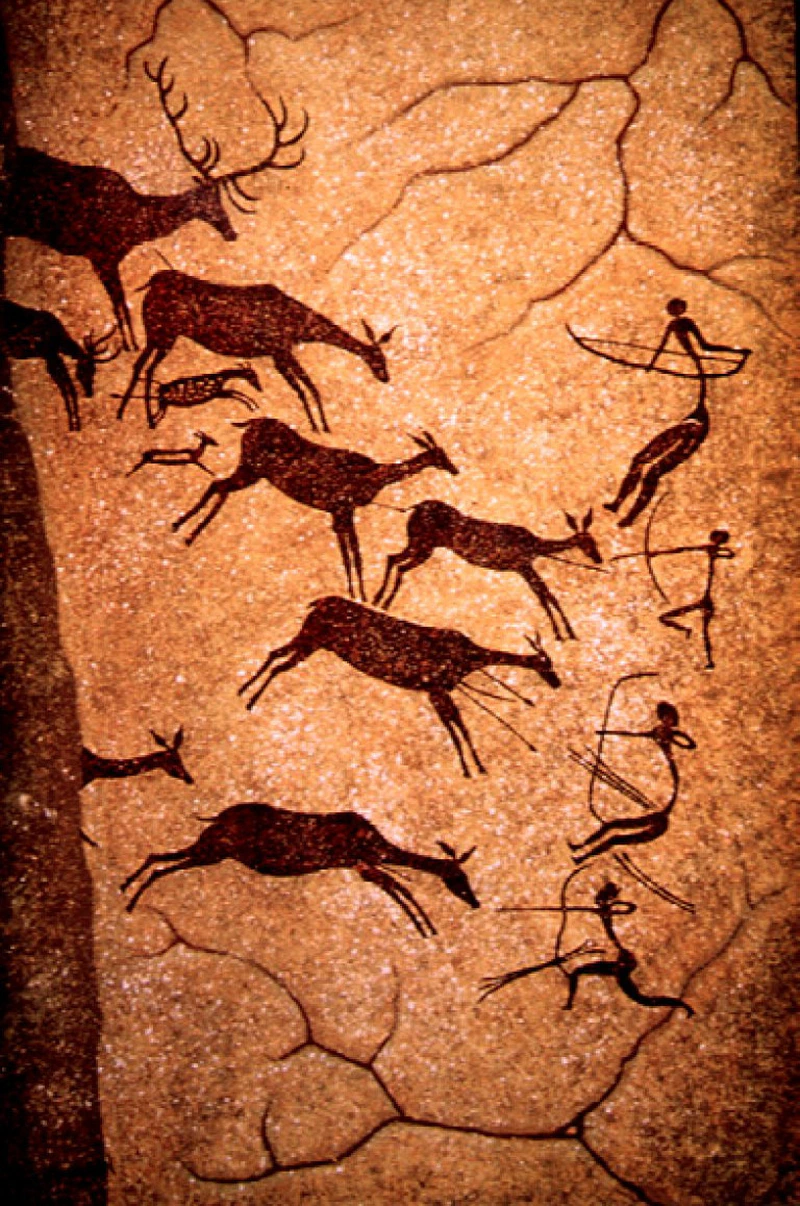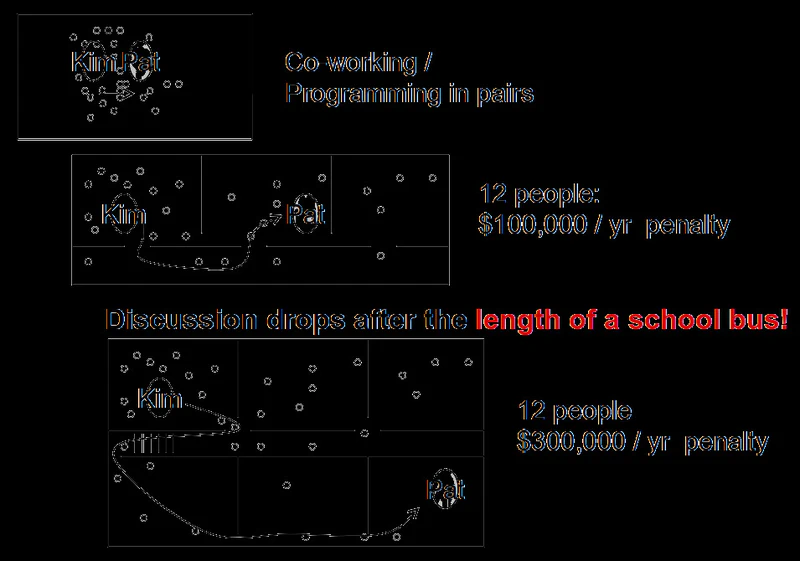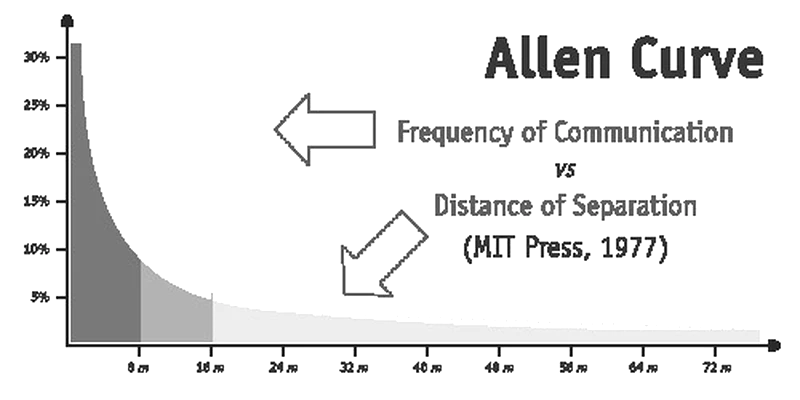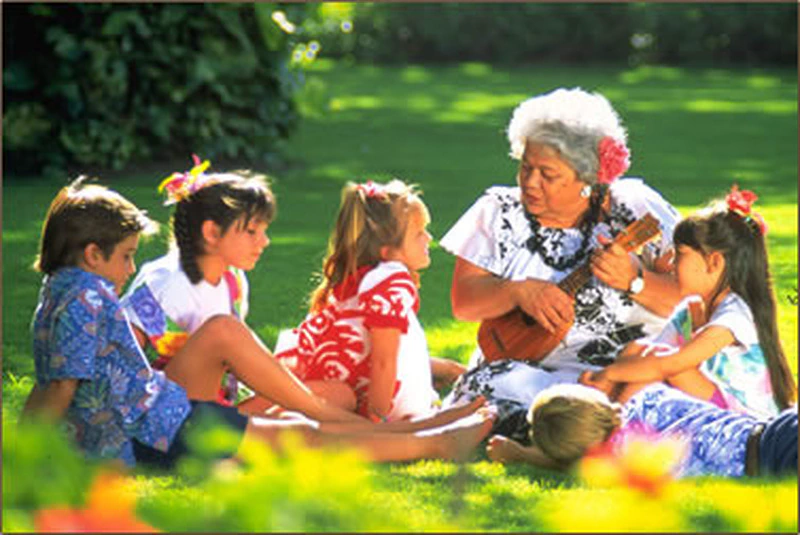Chapter 5: Constituent Elements
I refuse to join any club that would have me as a member! – Groucho Marx
The element that constitutes our organizations is primarily us, the human being. And we tend to singularly forget what we are capable of, or incapable of. If we agree that the dynamic that links all the elements of our organizations, i.e. us, is communication, here are some key points to keep in mind.
“Constructive” communication becomes difficult beyond seven
The objective of our organizations is generally to build something, to generate something. This construction in our case is done by several people (otherwise we wouldn’t be talking about organization). For these groups of humans to be effective, my observations and experiences indicate that beyond seven or eight people, communication dynamics within groups deteriorate. As if the combinatorics beyond eight people became too arduous a burden for our physical capacities. This is what I was pleased to find in Fred Brooks’ book (“The mythical man month”)1, when he presents this diagram on communications within the group:

Here’s a good first indication: no point in trying to create large groups: the “constructive” communication dynamic will have difficulty emerging beyond eight people, let’s say seven to use a number that we often attribute mysterious powers to. Yes, this indicates the need for a workload dedicated to synchronizing these groups (we will come back to this later), but that’s quite normal, it’s the characteristic of large organizations (if we want an organic image: we would speak of a cellular aspect).
This number of eight or seven will be reinforced by the pleasure of belonging to a group. Studies2 have demonstrated that the pleasure of belonging to a group fluctuates according to the size of the group. Whether you are seven or fifty, the people in the group will recognize each other and feel good among themselves. Don’t forget that this is also a key to involvement and commitment.
Last number, Dunbar’s number as it’s called, which approaches 150-220, it’s at this number that prehistoric villages split. Beyond that, it seems that social relationships crumble (yet it appears increasingly that social relationships are the natural advantage of human beings over other species3). Thus around 150-220, we can no longer sustain social relationships, and thus a separation occurs.
Here then is an impact of the element that we are for our organizations: it’s better to create departments of 150-220 people, composed of groups of 50 people, themselves composed of teams of seven to eight people maximum (and let’s say three or four minimum, because below that it’s no longer a group, so we start to lose the dynamic and collective intelligence, even if we gain other facilities).
Words are not the best vectors of information
Verbal overshadowing is the idea that words carry with them such a past, so specific to each of us, that it’s simply illusory to believe that they clarify communication. This is a counter-intuitive learning, especially in relation to our French education, in love with fine literature, words introduce ambiguity5.
To communicate effectively, you must draw, trace, make diagrams, like the aurochs in our ancestors’ caves. A picture is worth a thousand words. Between the aurochs on the wall and the Rosetta Stone (which offers the same text translated into different languages) a step was taken. It may have been necessary for humanity, but it is also the source of many misunderstandings6.


The Rosetta Stone is the end of intuitive understanding and thus fast and effective.
For your organizations, favor non-verbal communication based on diagrams, schemas, etc.
We know the Pictorial Superiority Effect: the visual sense is much more pronounced in us than any other. It encompasses 75% of our external stimuli. Add to this the knowledge that the more senses we associate with each other, the more the quality of memorization is enhanced. Yes, there is a real difference between a physical board that we manipulate (we touch the elements) and an electronic board that we don’t really manipulate. We are made this way. The good foundation of an organization is therefore visual communication, not based on words but on visual management tools that associate as many senses as possible to improve memorization and therefore problem solving7.
Distance and co-location
This co-location story is an important point today. The development of many tools enabling remote work has opened up possibilities: well-being for the person who wishes to work in their personal environment, formation of teams across the globe, etc.
Energy frugality (material economy, energy optimization, end of resources) and the space taken by the immaterial are the two emblematic figures of our new world.
What we know about these non-localized teams is that there is a fundamental difference between dispersed teams: their distribution (number, geography) is unbalanced, and distributed teams where their distribution is balanced. For example, for dispersed you have four people on site, and two on remote sites. It’s complicated to make work because there’s an imbalance in communication. But if you have six people, each on remote sites, there is no imbalance. Communication is truly key. By having the same level of communication, we induce the same level of transparency and therefore trust, and therefore involvement and freedom on which building something is possible.

Alistair Cockburn
However, I find myself facing a Cornelian choice: it’s obvious that a team works better on the same site, in the same project room. On this point, moreover, Alistair Cockburn tells us that beyond the distance of a bus, the damage is considerable on team dynamics (hence also the project room, obeya that we’ll discuss later) ; this is also why we say that the distance between two floors is as considerable as that between two cities. I return to my Cornelian choice: on one side the quality of communication and thus of team dynamics, on the other side, if a desire for remote work is expressed, the freedom and thus the involvement and commitment of the people who constitute this team. The pursuit of studies by Tom Allen on the mentioned curve indicate however that all modern means of communication have accentuated this rupture. I remain more measured on this.

Obeya
Concerning co-location and the memorization effect mentioned above: know that Toyota had advocated obeya (project room from Toyota’s Lean). The Obeya is a space dedicated to a theme and reserved for a team. If information is clearly localized in physical space, it will be in the brain8. For example, if you teach your child English and Spanish, it’s best to carry out each of these learnings in different rooms, the storage in the brain being associated with the place.
Self-organization
“Every living system is self-organized, wanting to organize it is not only useless, but above all it’s stupid”
– Harrison Owen9
If we classify ourselves in the category of living systems, which I sincerely hope, we inherit their capacities. Yet all living systems are known to self-organize. This means that there is no need to organize their activities, they do it by themselves. In other words, there is no need to organize our organizations, if we have a clear objective, and clear rules: that is to say a sort of container, a set of constraints, the organization will self-organize. It will not be disorganized. This is a well-known approach: set the framework (rules, objective, ability to know where we stand: feedback), and let self-organization flourish within it.
Learning & story

Learning is the integration of patterns. The more we learn, the more we integrate patterns to differentiate situations. Noise and disorder exist and therefore many patterns resemble each other but are different. We then create more and more patterns to respond to our growing learning. Thus disorder generates order (more and more patterns) but in an increasingly complex set10. This is what actually constitutes what we are, our stories, hence storytelling, it’s our past, our memory patterns.
Story can be considered as an ideal memorized pattern.
And then we easily project ourselves into a story. Like the mirror effect of our brain: if you see someone hitting a nail with a hammer, the areas of your brain related to this activity are awakened; stories provoke a mirror effect11.
Finally and not least, stories have always been the basis of our sociability: they describe our relational fabric. And this social propensity is the very basis of our humanity.
According to Jerome Bruner, a fact told through a story is memorized 22 times better than the same fact presented directly12.
A fact is memorized 22 times better if it’s a story, a manager makes 22 times more decisions than 100 years ago, to your stories!
-
Fred Brooks, https://archive.org/details/mythicalmanmonth00fred ↩︎
-
See the ‘Pleasure of belonging to a group(http://areyouagile.com/2011/06/appartenance-a-un-groupe-et-niveau-de-satisfaction/) following concerning the writings of Christopher Allen and Robin Dunbar ↩︎
-
“Social: Why Our Brains Are Wired to Connect”, Matthew D. Lieberman ↩︎
-
(http://areyouagile.com/2011/06/appartenance-a-un-groupe-et-niveau-de-satisfaction/ ↩︎
-
“Reading these paragraphs I had a shock, because I like coherence. Why are you writing this book then? Why these digressions on crystals and termite mounds? Indeed, an image is 300 to 3000 words. What additional value do words have then for you to come to write a book? In short, I like measured discourse. In my opinion, each medium has its usefulness. Besides, how could I communicate to you what I’m writing with a drawing without you interpreting? Drawing can also introduce ambiguities. In short, what I would like to find in what you write about words are the circumstances in which a drawing seems more appropriate to you.” protests Paul-Georges Crismer commenting on these words. I quite agree. When I am no longer inconsistent or paradoxical I will certainly be dead. Words have the power to remain, to help me organize my thought. If I push in the other direction it’s because in our culture the culture of the power of writing is considerable and we must know how to put it in perspective. ↩︎
-
“Blah blah blah”, Dan Roam, http://changethis.com/manifesto/show/88.01.BlahBlahBlah ↩︎
-
Brain rules, John Medina ↩︎
-
Brain rules, John Medina ↩︎
-
Harrison Owen, Dancing with Shiva (https://www.youtube.com/watch?v=APD7oQ3xrSA) ↩︎
-
“Entre le cristal et la fumée. Essai sur l’organisation du vivant”, Henri Atlan ↩︎
-
“Social: Why Our Brains Are Wired to Connect”, Matthew D. Lieberman ↩︎
-
Jeff Patton, User Story Mapping. //TODO go get the original source ↩︎
